What Is a Suribachi?
A suribachi is a traditional Japanese mortar with fine ridges inside, used for grinding and mashing. Paired with a wooden pestle (surikogi), it’s an essential tool in Japanese kitchens.The grooved ceramic surface helps release deep flavors and aromas, especially from sesame seeds, herbs, or soft ingredients.
Unlike Western mortars, the suribachi feels lighter and easier to handle—plus, it looks charming on the table.
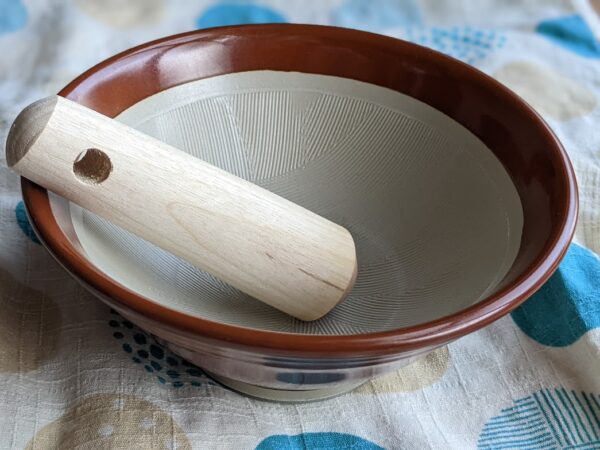
Why I Finally Bought One
For the longest time, I thought a suribachi was just for serious home cooks—the kind who grind sesame seeds every day. Me? I kept thinking: What if I buy one and never use it?
But then I discovered: you can bring it straight to the table and use it as a serving bowl. Even when I’m too tired to “cook properly,” it doubles as a rustic, cozy dish. Less cleanup, more charm.
How I Use My Suribachi (More Than You’d Think!)
✨ Grind Sesame Seeds (and Make the Sauce Right There!)
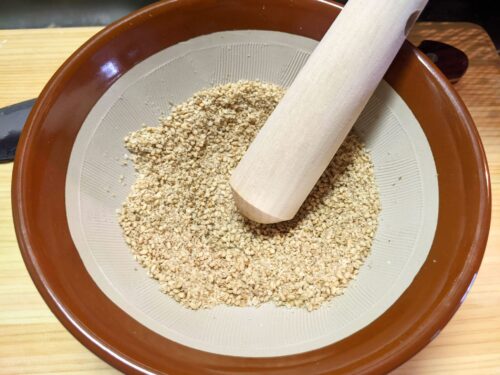
The most classic use. Toast your sesame, grind in the suribachi, then keep going—add soy sauce, miso, or vinegar for a quick sesame dressing. And yes, freshly ground sesame smells incredible.
☕ Powder Tea Leaves
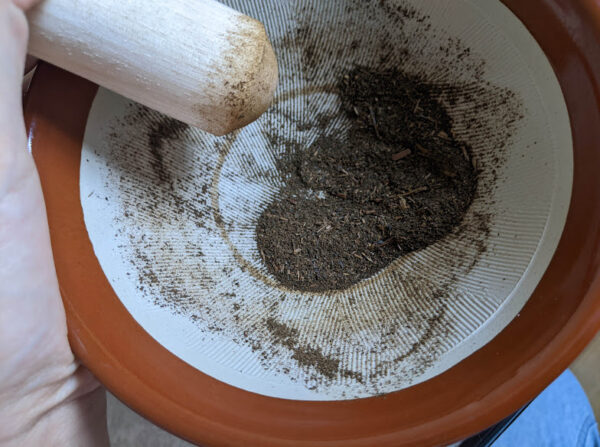
You can gently grind green tea leaves into a fine powder (konacha) and drink it whole. It’s rich in antioxidants and gives a deeper tea experience.
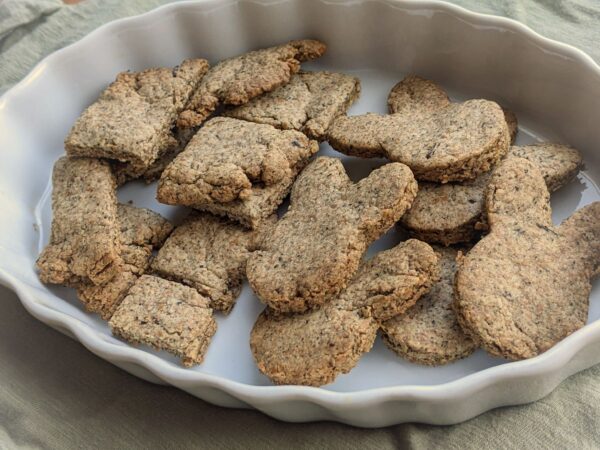
Or bake with it! I once powdered roasted green tea (hojicha) and used it for cookies. My daughter gave them two thumbs up. Hojicha is naturally low in caffeine, so it’s a great option for kids. And guess what? My daughter loved them.
Once your tea is powdered, you can mix the dough right there in the same bowl. It’s easy, cozy, and makes your kitchen smell amazing.
🌿 Smash Umeboshi (Pickled Plums)
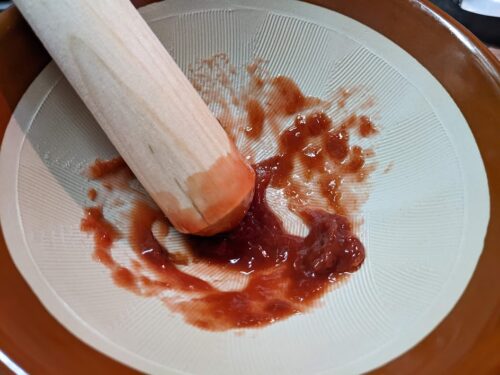
Sticky to chop with a knife, but easy to mash in the suribachi. Add seasonings, and it’s ready to serve in the same bowl.
🥑Mash Avocados or Bananas (No Slipping!)
The grooves keep soft foods from sliding around. Perfect for guacamole or banana purée. And yes—you can serve right from the bowl.
⚡ Make Fluffy Tororo (Grated Yam)
Suribachi is also essential for making tororo, the fluffy, grated Japanese yam often served over rice or noodles. While you can grate the yam directly in the suribachi, it takes a bit of time and effort.
Youcan also Grate the yam first with a regular grater, then transfer it to the suribachi and give it a good mix. The grooves help incorporate air and break down the fibers, turning the yam into a silky, cloud-like texture!
The more you work it in the suribachi, the whiter and fluffier it becomes, full of delicate little bubbles. It’s truly satisfying!
Japanese yam is packed with nutrients and known for its stamina-boosting and recovery benefits—not to mention, it tastes amazing too.
🍼 Baby Food Time
Soft veggies, rice porridge, even fish—you can mash small portions easily. Perfect when cooking for yourself and your little one.
🌟 It’s Not Just for Japanese Food
Flaxseeds, pine nuts, peppercorns… even basil for pesto! Since the suribachi is gentle, herbs don’t heat up like they do in a blender, so the flavor stays fresh.
In Italy, chefs still hand-crush basil in a mortar—so maybe my suribachi is a little international too.
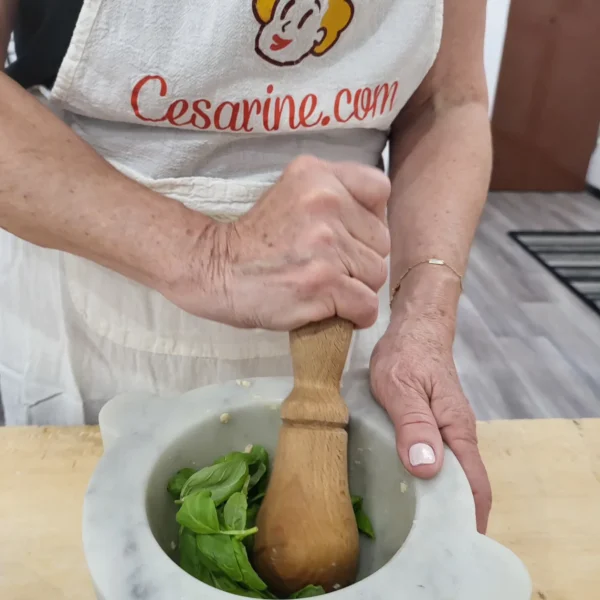
Italian chefs still using a marble mortar called a mortaio (that’s the one on the left in the photo! https://cesarine.com/it/experiences/il-pesto-di-basilico-al-mortaio-dQrqqgqJYP) to make traditional Genovese pesto. No surprise—the texture and aroma are unbeatable.
If you’re working with heat-sensitive herbs like basil, using a suribachi instead of a blender helps preserve the flavor and freshness. It’s the same idea with other tender greens, too—gentle pressure, no heat, big flavor.
4. Benefits of Using a Suribachi
5. Which One to Buy (Beginner-Friendly Tips)
○ Pick one you like looking at – if it’s pretty, you’ll use it more!
○ Start small or medium – around 12–18 cm (5–7 inches) is ideal
○ Choose ceramic with glaze on the outside and ridges on the inside
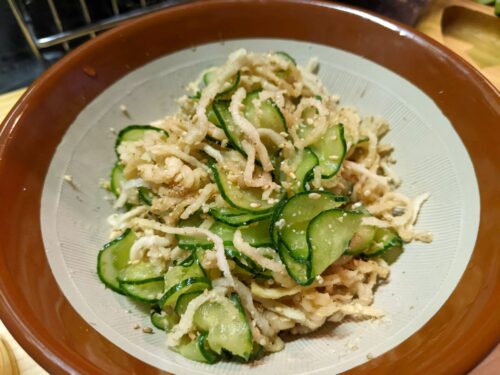
I use a medium-size (15.5 cm / about 6 inches). It’s a bit small for fluffy yam, but perfect for everyday use. Sturdy, easy to clean, and nice enough to bring to the table.
Once my child gets older and we’re cooking bigger portions, I might upgrade to a larger size. But for now, this one is surprisingly handy!
💡 Here are a few options depending on your needs and kitchen size (Amazon US):
Tip: Make sure your suribachi comes with a wooden pestle (called a surikogi) or buy one separately!
6. Final Thoughts
I hesitated at first, but now I reach for my suribachi almost daily. Whether I’m making sauce, prepping lunch, it brings flavor, ease, and a little joy to my everyday cooking.
So if you’re curious—go for it. You might just fall in love with this little grooved bowl too.
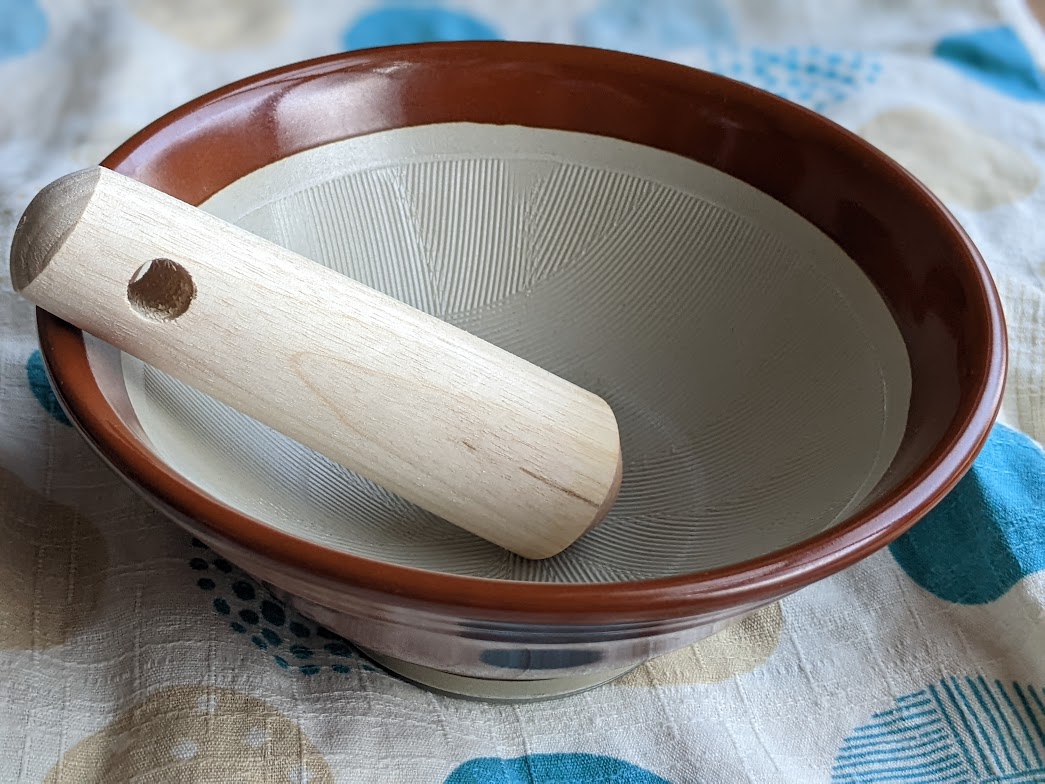
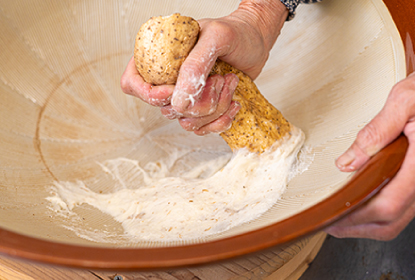
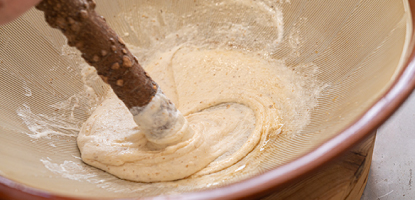
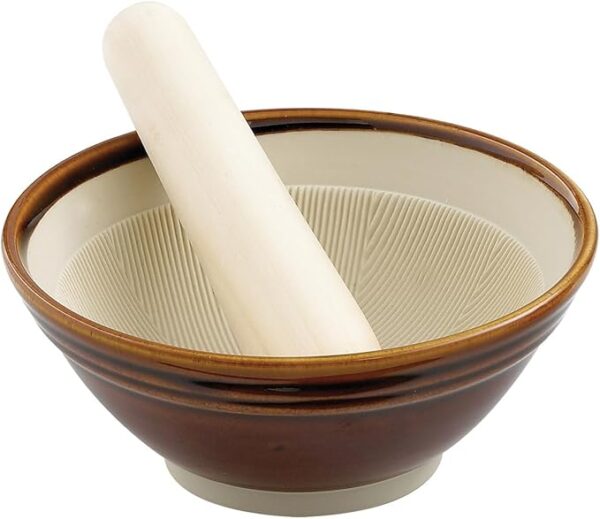



Coment